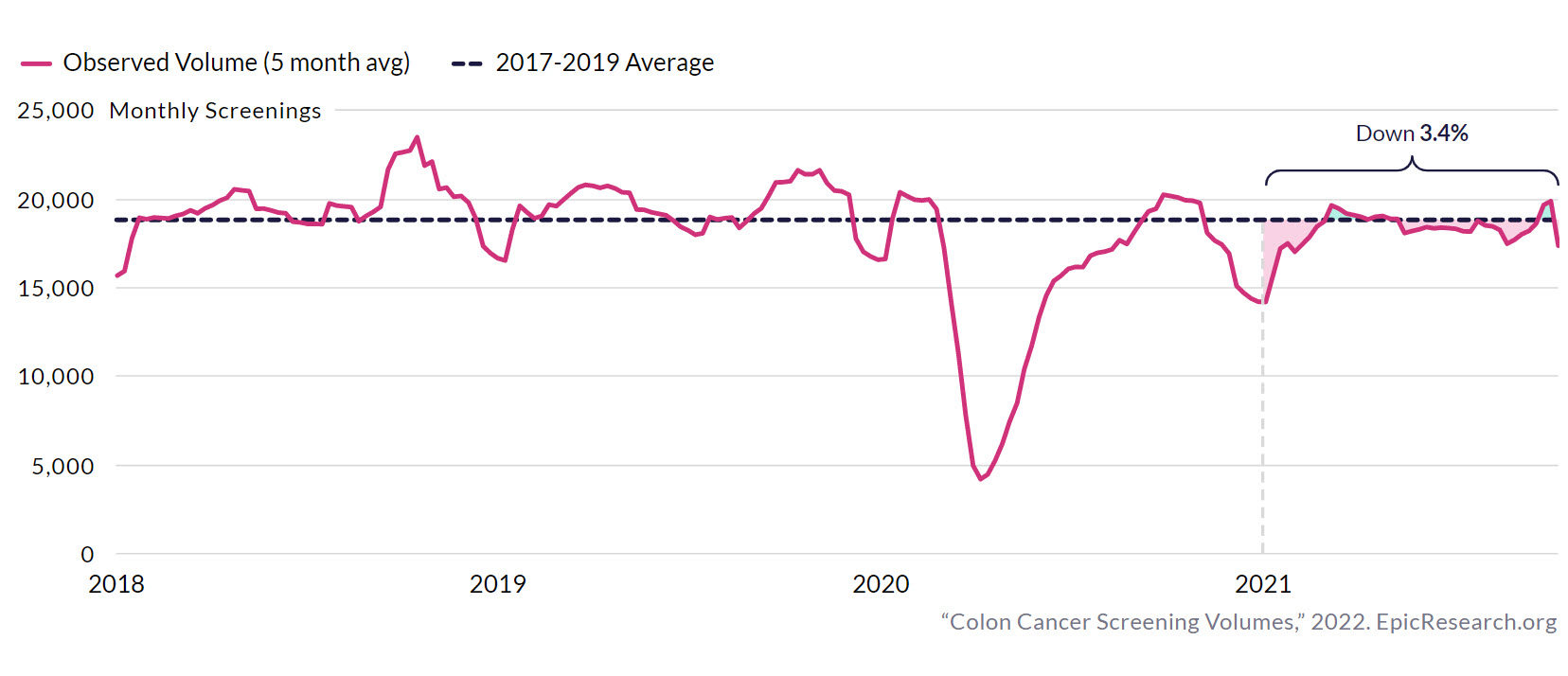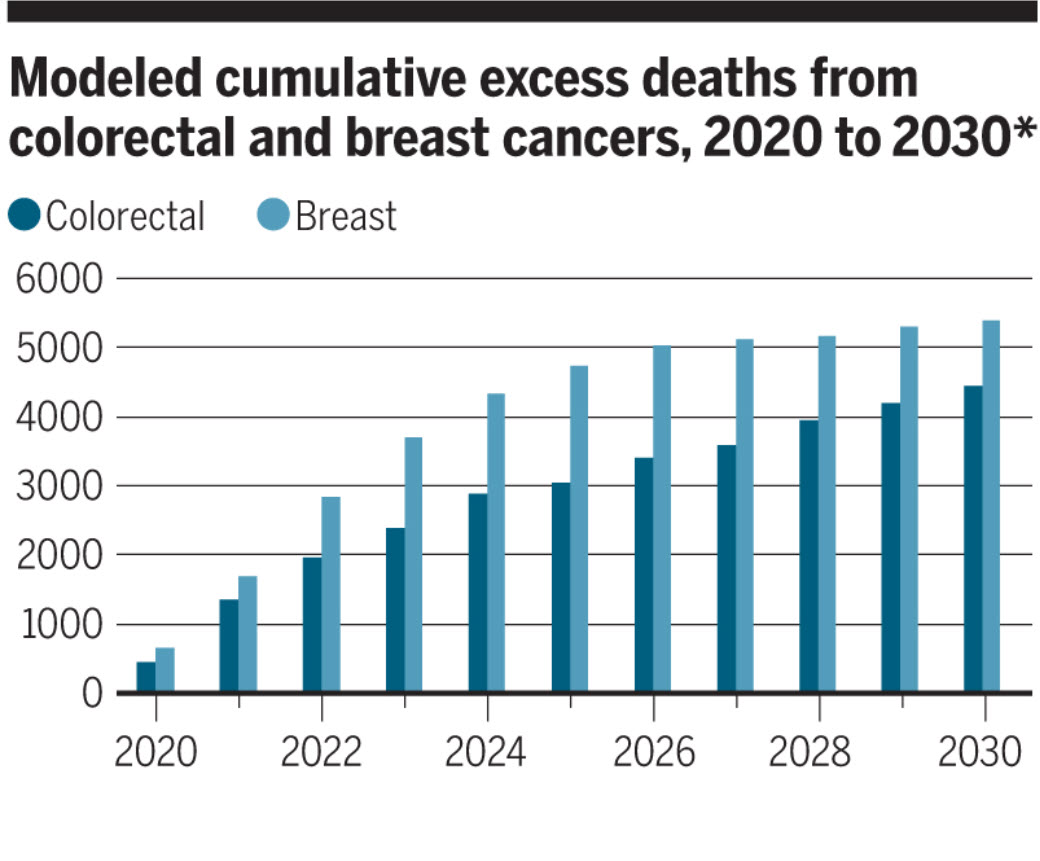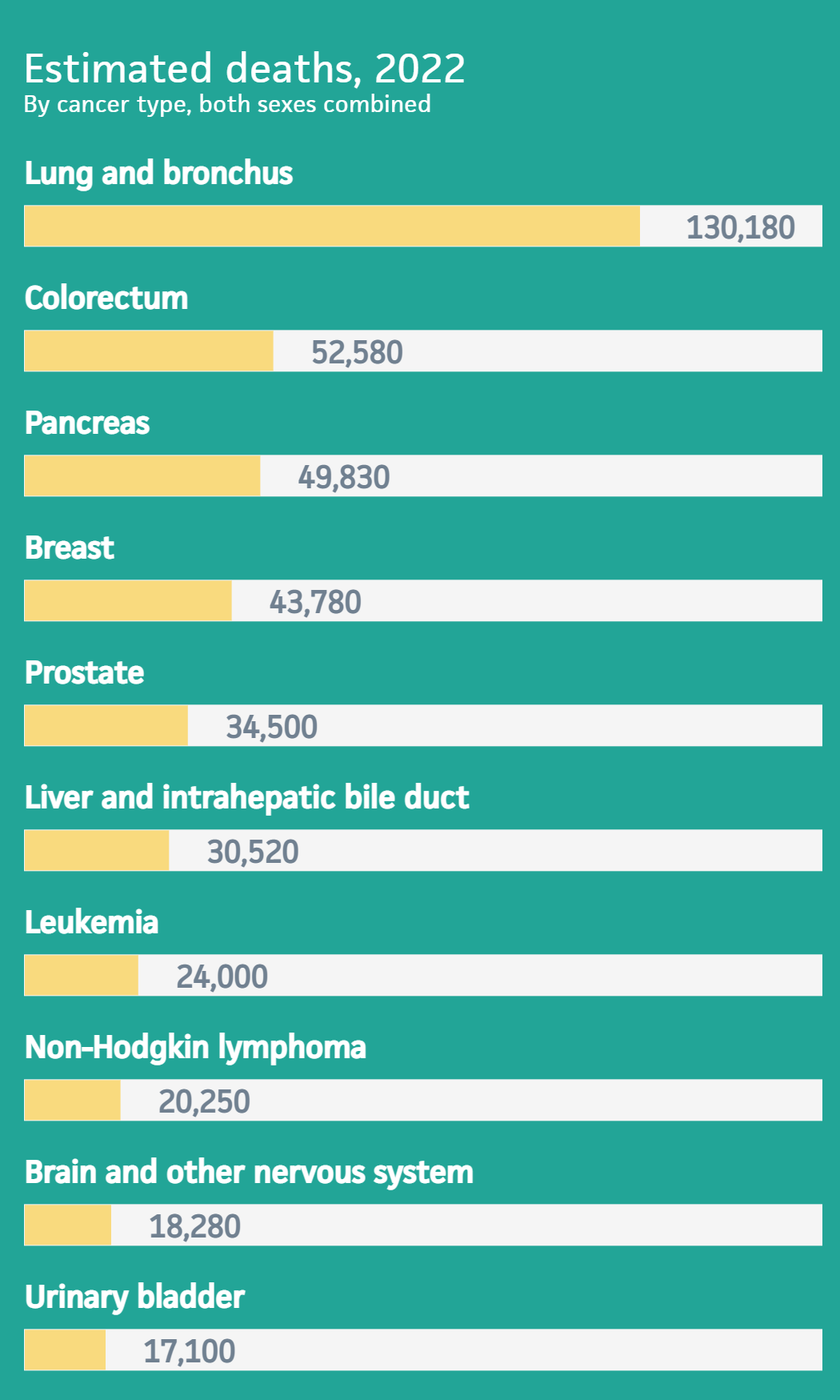
Sadly, more than 1.7 million Americans face a cancer diagnosis each year1, resulting in not only substantial loss of life, but also enormous emotional and financial challenges for those affected. If detected and treated at early stages, many cancers are curable. Yet cancer screenings are only widely available today for five types of cancers.
Mammograms and colonoscopies, two widely available cancer screenings, have significantly improved patient survival rates and limited the disease’s devastating toll. Screenings combined with a decline in smoking plus advancements in treatment have resulted in a marked reduction in overall cancer death rates in the past two decades - falling by 32% between 1991-20192.
But even with existing screening measures, cancer remains a major concern for all of us.
In the U.S., cancer is the leading cause of death for individuals under the age of 853. Approximately 600,000 Americans die from cancer each year4, and almost 70% of these deaths are from cancers for which we cannot screen for today. To put this into perspective, there were 460,000 deaths from COVID in 20215 — cancer deaths have exceeded this annually since 1985.
Where do we go from here as an industry and as a society? What are the effects of the pandemic on cancer mortality in the short term? And how can we save more lives from cancer in the future? In this article, we explore the global pandemic’s toll on cancer diagnoses and what it may mean for the future of US life expectancy, offer insight into technological innovations to support early detection and treatment of cancer, and share perspectives on the role the life insurance industry can play in producing better outcomes for cancer patients.
The pandemic’s toll: millions of missed screenings and later-stage detection
Since the start of the COVID-19 pandemic, cancer screenings, diagnoses and treatments have fallen precipitously.
According to the American Cancer Society, 2020 alone saw an estimated 9.4 million missed cancer screenings in the U.S.6 In the early months of the pandemic, screenings for breast and cervical cancer fell by an astonishing 94% while screenings for colon cancer were down 86%, according to an analysis of data for more than 126 million patients across the country.7 Additionally, a review of data from healthcare systems serving more than 11 million patients in seven states found that monthly screenings for lung and cervical cancer fell by 62% and 92%, respectively.8
Breast Cancer Screening Volumes

Colon Cancer Screening Volumes

Unsurprisingly, the drop in screenings has also meant a sizable drop in new cancer diagnoses. One study comprising 800,000 patients receiving testing at Quest Diagnostics found an almost 30% decline in new diagnoses of eight common types of cancer — including prostate, breast, colorectal and lung — during the first three months of the pandemic.9 Although the number of newly identified cancers approached pre-pandemic levels in the summer of 2020, they fell again in fall of 2020, remaining significantly below pre-pandemic levels through March 2021.
With little reason to believe that cancer incidence has actually fallen to this degree, it seems clear that screening disruptions are simply pushing some diagnoses out to a later stage when cancers are more advanced and treatments both more expensive and less effective. A recent study at Moores Cancer Center at University of California San Diego Health found a significant drop, from roughly 64% to 51%, in the percentage of breast cancers diagnosed at stage I between 2019 and 2020, along with a corresponding jump in stage IV diagnoses, which rose from 1.9% to 6.2%. An even more pronounced shift toward advanced cancer was found in early 2021, when only 42% of patients studied presented with stage I breast cancer and 8% with stage IV. 10
What does this mean for future cancer mortality rates?
While the true long-term impact on cancer mortality remains unclear, the short-term impact is predicted to be significant. Two studies in the U.S. and the U.K., for example, have predicted significant increases in cancer deaths.
National Cancer Institute (NCI) Director Dr. Norman E. Sharpless made a June 2020 projection that screenings missed as a result of the pandemic would lead to 10,000 additional deaths from breast and colorectal cancers alone.11

Technology solutions offer promise

Fortunately, the combination of technology, increased medical knowledge, and more robust analytics to develop new ways of diagnosing and treating cancer offers renewed hope for those 1.7 million Americans that face cancer diagnoses each year.
We are encouraged by some game-changing technology solutions accelerated during the pandemic, including the development of multi-cancer early detection blood tests that may drastically increase the number of cancers we can screen for, including those for types of cancers where there are no currently established screening measures. Such innovations are poised to improve early cancer detection and could ultimately decrease cancer mortality going forward.
Role of the life insurance industry in the early detection and treatment of cancer
Cancer – the effects on patients and their families can be devastating. For many, a cancer diagnosis is their worst fear coming to fruition. But what if we could prolong this day from happening? What if we could prevent it in its entirety? Consider the impact this would have on humankind.
Life insurers are uniquely positioned as an industry to encourage Americans to live longer and healthier lives. At Munich Re, we believe that we have a responsibility to society to help advance early detection and treatments that produce better outcomes for cancer patients.
While we brace ourselves for the initial impact of COVID-19 on cancer mortality, life insurance companies will have to decide what role they want to play in empowering progress. At Munich Re Life US, we are investing in state-of-the-art technologies and digital tools to help the industry and societies thrive. We are developing unique partnerships that combine our expertise and innovative thinking to bring solutions to our biggest challenges. And we are leveraging our place in the world to help create a better future for all.
Will you join us?
2. https://doi.org/10.3322/caac.21708
3. https://wonder.cdc.gov/mcd-icd10.html
4. https://gis.cdc.gov/Cancer/USCS/#/AtAGlance/
5. https://www.cdc.gov/nchs/nvss/vsrr/covid19/index.htm
6. https://acsjournals.onlinelibrary.wiley.com/doi/full/10.1002/cncr.34157
7. https://epicresearch.org/articles/troubling-cancer-screening-rates-still-seen-nearly-two-years-into-the-pandemic
8. https://www.ncbi.nlm.nih.gov/pmc/articles/PMC7575503/pdf/main.pdf
9. https://jamanetwork.com/journals/jamanetworkopen/fullarticle/2783630?resultClick=1
10. https://jamanetwork.com/journals/jamanetworkopen/fullarticle/2789064
11. https://www.science.org/doi/full/10.1126/science.abd3377
12. https://www.thelancet.com/journals/lanonc/article/PIIS1470-2045(20)30388-0/fulltext
Contact the Author

/Gina%20Guzman.jpg/_jcr_content/renditions/original./Gina%20Guzman.jpg)
/Brad%20Heltemes.jpg/_jcr_content/renditions/original./Brad%20Heltemes.jpg)

Newsletter
properties.trackTitle
properties.trackSubtitle